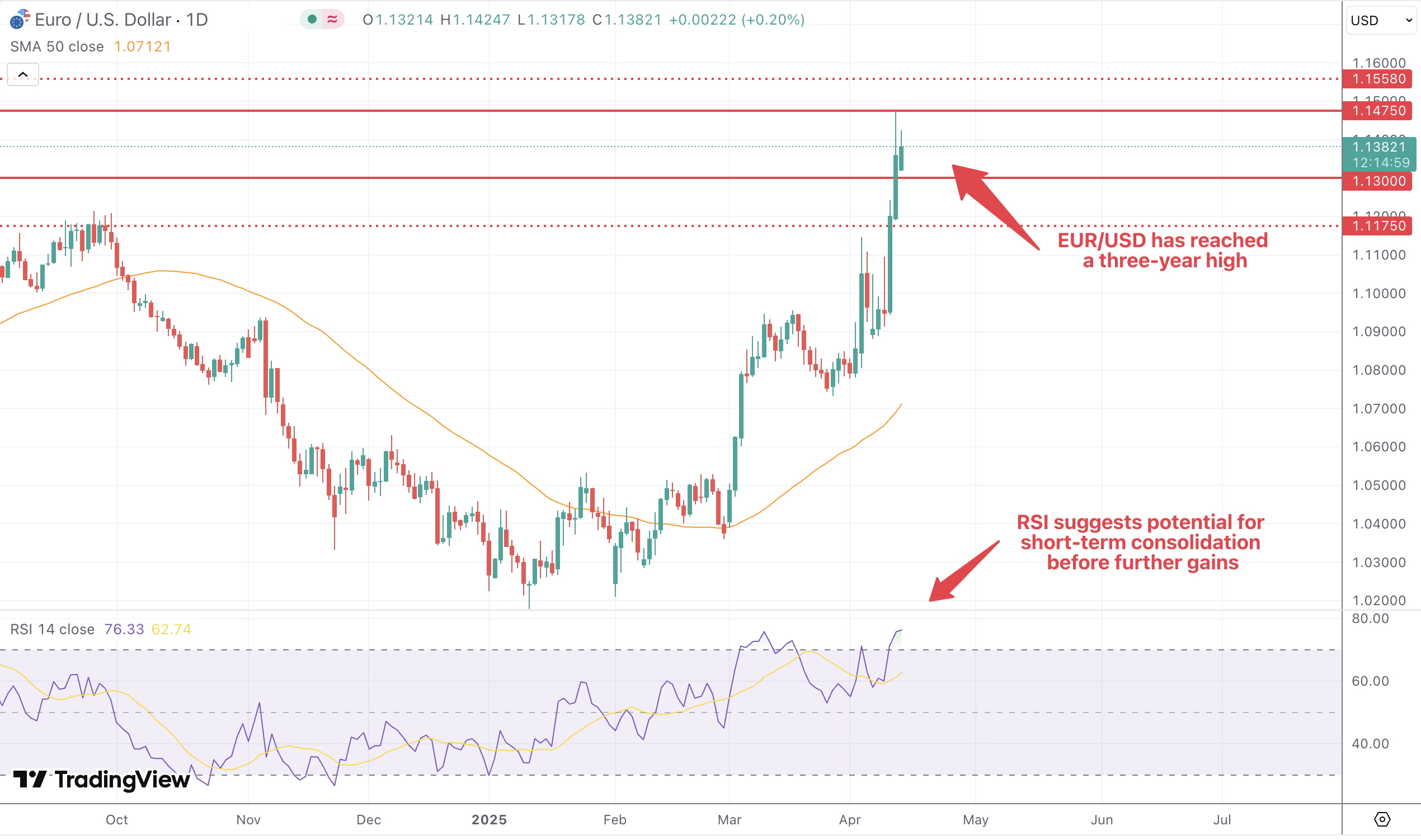Key Takeaways
- EUR/USD has reached a three-year high above 1.14, driven by trade tensions and eurozone economic optimism.
- Technical indicators support the bullish trend, with key support at 1.1175 and resistance at 1.1475.
- The RSI suggests potential for short-term consolidation before further gains.
- Fundamental factors, including ECB policy expectations and U.S. dollar uncertainties, favor continued euro strength.
- Upcoming U.S. economic data and ECB communications will be critical in determining the pair’s short-term trajectory.
Market Dynamics and Recent Performance
The euro has recently surged to a three-year high against the U.S. dollar, reaching levels above 1.14. This appreciation is largely attributed to escalating trade tensions, particularly following the imposition of new U.S. tariffs on European imports. Investors have responded by reallocating funds away from U.S. assets, favoring the euro as a relatively safer alternative. Additionally, Germany’s announcement of a significant spending plan has bolstered confidence in the eurozone’s economic prospects, further supporting the euro’s strength.
However, the European Central Bank (ECB) has expressed concerns about the euro’s rapid appreciation, which could potentially hinder export competitiveness and suppress inflation. Market participants are now anticipating a possible 25 basis point rate cut by the ECB to counteract these effects and maintain price stability.
Technical and Fundamental Influences
From a technical standpoint, EUR/USD maintains a bullish trend, trading above key moving averages, including the 50-day and 200-day simple moving averages. The pair has recently broken through previous resistance levels, indicating strong buying pressure. Support levels are identified at 1.1175 and 1.1300, while resistance is observed near 1.1475 and 1.1558. The Relative Strength Index (RSI) is approaching overbought territory, suggesting a potential for short-term consolidation or minor corrections before resuming the upward trajectory.
Fundamentally, the euro’s strength is underpinned by expectations of continued economic stimulus within the eurozone and concerns over the U.S. dollar’s stability amid trade policy uncertainties. Analysts have revised their forecasts, with some projecting EUR/USD to reach 1.20 over the next 12 months, reflecting a shift in sentiment favoring the euro.
Looking Forward
In the upcoming week, EUR/USD may experience periods of consolidation as markets digest recent gains and await further economic data releases. Key events to monitor include U.S. retail sales figures and statements from Federal Reserve officials, which could influence market sentiment and the pair’s direction. Additionally, any developments in trade negotiations or policy announcements from the ECB will be closely watched for their potential impact on the currency pair.


